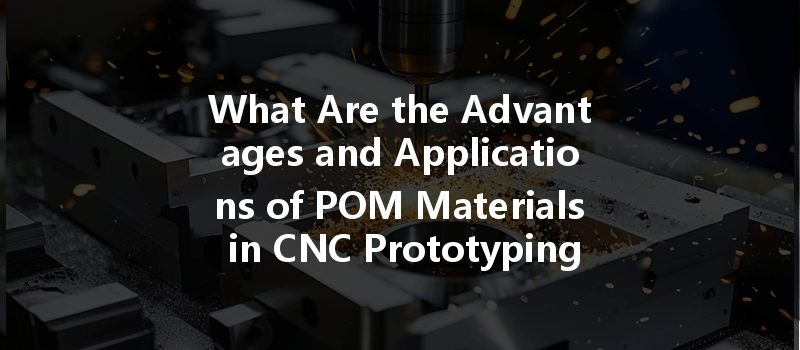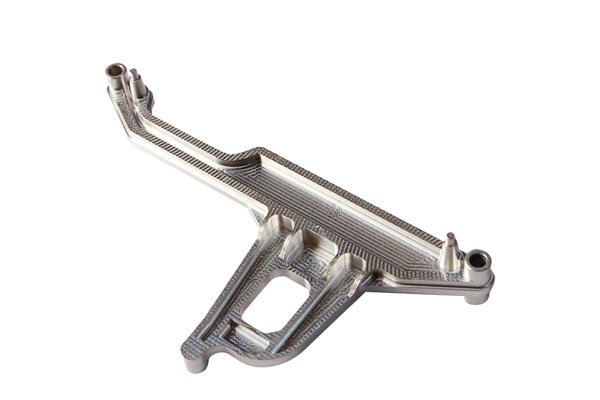: An Interesting Fact About POM Materials
Did you know that POM (Polyoxymethylene), commonly referred to as acetal, is one of the most widely used engineering thermoplastics in the industry? This versatile material boasts exceptional strength, low friction, and outstanding dimensional stability, making it a go-to choice for many CNC (Computer Numerical Control) prototyping applications. In a world where precision and reliability are paramount, understanding the materials used in prototyping is critical for manufacturers and engineers alike. Today, we will delve into the advantages of using POM materials for CNC prototypes and explore various applications for which they are ideally suited.
What is POM?
POM, or polyoxymethylene, is a high-performance thermoplastic known for its high stiffness, low friction, and excellent wear resistance. Often used in precision engineering applications, it is ideal for components that require high dimensional accuracy. POM is chemically resistant and has good fatigue strength, making it suitable for diverse environments.
The material’s properties stem from its polymer structure, which consists of repeating units of formaldehyde. Due to its robust characteristics, POM is also known for its ease of machining, making it a favorite choice in CNC prototyping.
Advantages of POM Materials in CNC Prototyping
POM has a remarkable strength-to-weight ratio. Its tensile strength can be as high as 70 MPa, making it capable of bearing heavy loads while remaining lightweight. This is especially beneficial for industries producing components that require both strength and reduced weight.
One standout feature of POM is its low coefficient of friction, which enables components to perform smoothly against each other. This property reduces wear and extends the lifespan of parts, which is particularly crucial in applications involving moving mechanisms.
CNC prototypes made from POM maintain their shape and size even under varying temperature and humidity conditions. This stability is critical for precision parts that need to fit together tightly in assemblies.
POM displays a high degree of resistance to a wide range of chemicals, including oils and solvents. This characteristic makes it suitable for factory environments dealing with various substances.
POM is straightforward to machine, as it has excellent chip formation during CNC processes. Its good surface finish can often be achieved without the need for extensive secondary processes, reducing production time and costs.
The material’s durability and ability to withstand sudden shocks make it ideal for parts that must endure rigorous conditions without breaking or deforming.
POM can be used in various forms, such as sheets, rods, or custom-fabricated components, allowing flexibility in design and applications.
Applications of POM Materials in CNC Prototyping
CNC prototyping with POM materials spans a broad range of industries and applications. Here are some notable examples:
POM is extensively used for manufacturing gears, fuel system components, and various other parts that require precision and durability. The material’s ability to handle a wide range of temperatures makes it suited for engine and transmission parts.
POM is used in making intricate designs for consumer electronics, including connectors, switches, and other components that require a fine finish and dimensional accuracy.
The biocompatibility and chemical resistance of POM make it a popular choice for various medical devices. Components like surgical instruments, housings for medical diagnostics, and drug delivery systems often employ POM in their designs.
Many industrial applications utilize POM for parts like bearings, bushings, and rollers, where excellent wear resistance and low friction are essential for long-term performance.

POM’s lightweight properties and strength are beneficial for aerospace applications, particularly in the creation of non-structural components and fittings where weight reduction is vital.
CNC Machining Techniques with POM
When machining POM for prototyping, a few considerations ensure optimal outcomes:
The choice of tools plays a significant role in achieving a perfect finish. Carbide tools are often preferred due to their hardness and sharpness, which allows for smooth cuts.
Optimal feed rates and cutting speeds must be determined for machining POM. While a higher speed can yield better surface finish, excessive speed can generate heat that may affect the properties of POM.
Generally, POM does not require cooling fluids during machining since it can produce favorable results dry. However, in heavier cutting, minimal lubrication may help in reducing friction.
Depending on the final application, a post-machining process such as assembly, sanding, or surface coating may be utilized to enhance the performance of the component.
Case Studies Highlighting the Use of POM in CNC Prototyping
Case Study 1: Automotive Gear Production
A leading automotive manufacturer sought to develop precision gears using CNC prototyping with POM. They required components that could withstand high loads while minimizing weight and friction. After integrating POM into their production line, they noted a significant reduction in wear among their moving parts, leading to decreased maintenance costs and improved vehicle performance.
Case Study 2: Medical Devices in Diagnostics
A company specializing in medical diagnostics needed a reliable material for housing their devices. They selected POM for its chemical resistance and dimensional stability. Following implementation, they achieved FDA compliance more easily than expected, as POM met both medical and technical standards. Their devices gained a reputation for precision, leading to increased market trust.
Tips for Choosing POM for CNC Prototypes
When considering POM for CNC prototyping, here are some important tips:
Analyze the conditions under which the final product will operate. POM is versatile, but certain grades may perform better in specific environments.
Ensure access to quality POM materials by establishing strong supplier relationships. Regular checks on material specifications will guarantee consistent performance.
Consider the long-term benefits of POM in comparison to initial costs. Although POM may be pricier than standard plastics, its performance and reliability can lead to significant savings over time.
Evaluate whether the supplier can provide custom solutions for your specific CNC machining needs. Modifying machining parameters can maximize POM’s benefits for your prototypes.
: The Importance of Understanding POM in CNC Prototyping
In summary, POM materials provide significant advantages in CNC prototyping, including superior mechanical properties, low friction, chemical resistance, and easy machinability. With diverse applications ranging from automotive and aerospace to medical devices, understanding how to best utilize POM can distinguish leading manufacturers from their competitors.
As CNC technology continues to evolve, the significance of selecting the right material like POM becomes vital for design precision and overall product reliability. Therefore, engineers and manufacturers should continually assess the role of POM in their projects, as it stands to offer remarkable benefits that can enhance efficiency and profitability.
In an industry where precision and quality are everything, considering POM as a material option opens up a wealth of potential for innovation in manufacturing. Remember, the right material choice today can lead to breakthroughs tomorrow.






